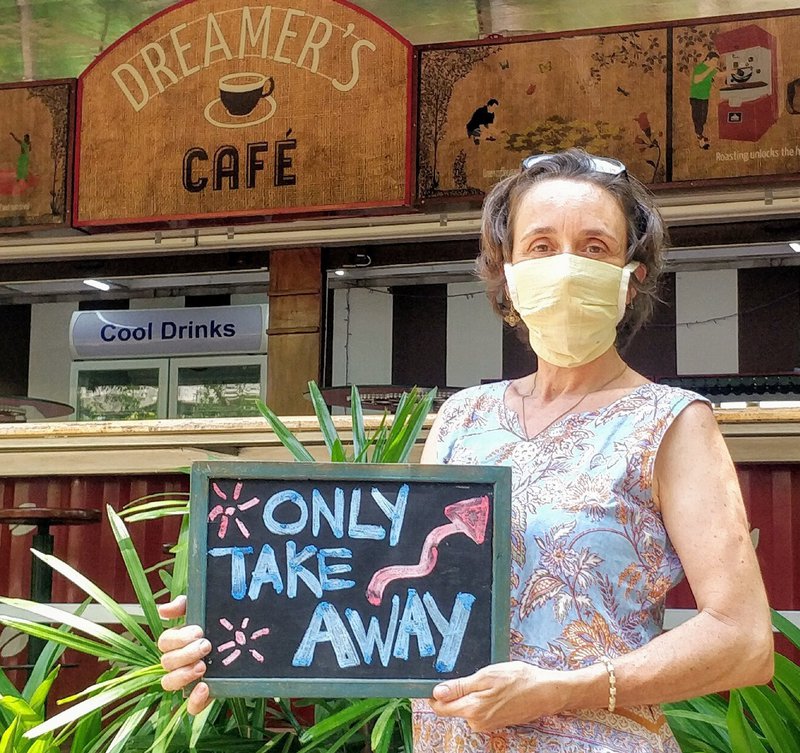Asia
Cases: 1,061,496 Deaths: 29,328 Recovered: 625,343
DIEHARD HABITS “AT RUSH HOUR IN TOKYO YOU CAN STILL SEE CROWDS OF PEOPLE ON TRAINS AND THE UNDERGROUND”
OASIS IN INDIA “ALTHOUGH WE ARE IN A PART OF THE COUNTRY WITH A HIGH RATES OF INFECTION, IN AUROVILLE WE ARE CLEAN”
CITIZEN RESPONSE “THE CHINESE TOOK THE GOVERNMENT’S RECOMMENDATION TO STAY AT HOME AS IF IT WERE AN ORDER”
1Japan was one of the first countries outside China to detect cases of Covid-19, in late January, and since then daily life has been marked by the pandemic. Jaume Labró, who was born in Masies de Roda 43 years ago, has been living in the Asian country for more than 11 years and spends his time between the capital Tokyo and a seaside village called Hayama. Confined to home for the past few weeks - “apart from the supermarket we try not to go anywhere” - Jaume says he has missed social life, but he has also been able to make the most of teleworking. However, he insists that despite the measures, “at rush hour you can still see crowds of people on trains and the underground”.
He adds that the Japanese character means people avoid physical contact, are good with personal hygiene and are accustomed to wearing masks, and that has made it easier for them to adapt to the situation. Meanwhile, the measures taken by the authorities have been strongly influenced by the effects the crisis could have on the economy. “During this time, they have made a lot of preparations, such as buying up the entire production of ventilators from local manufacturers until the summer to avoid their export and have also produced their own masks,” he says, adding that each citizen has been given an emergency payment while financial aid packages have also been offered to companies. Labró says that he has been surprised by the solidarity shown by the Japanese.
Extreme situations
Matilde Mir from Barcelona has been living in Auroville, in the state of Tamil Nadu in the south of India, for 23 years, in an experimental township where about 2,500 people from 58 countries live together. Matilde and her family work in the world of coffee and run three cafés. “Although we are in a part of the country with one of the highest rates of infection, in Auroville we are clean. It’s amazing,” she says, pointing out that this place has already been the scene of other natural disasters that have fostered self-sufficiency and collaboration. Mir links the first outbreak of coronavirus to a crowded gathering of a Muslim congregation in New Delhi in February.
“From that moment on, each province began to take measures, especially quarantine restrictions,” she says, noting that there were some extreme situations, such as that experienced by hundreds of workers from the south who could not return home after their workplaces closed and who were left without any resources to live on. “In the big cities, where people live close together, there have been more infections and the fact that most of them live day-to-day has made things more difficult,” she says. In the area of health, field hospitals and other facilities have been set up to meet the demand, which, for the time being, has not overwhelmed the system.
David Torres arrived in Kunming, southern China, on June 15. When the crisis began, he was on holiday in Thailand and when he returned to Kunming on January 31 everything was closed. “The government’s recommendation was for everyone to stay at home, and as the Chinese are very obedient, they took it as if it were an order,” he says. A control system using a QR code was also introduced. Torres sums it up: “If you walked in or out of a neighbourhood, or went to the grocery store, you would scan the code. If the colour green appeared, it meant everything was in order. If it came out red, it meant you were infected or that you could have been in contact with someone with the virus. If you then tested positive, where you had been and who you had met would be reviewed, and then everyone would be notified to go to a hospital for a check-up.” For over a month, the country has been returning to normal and people are going back outside onto the streets again. In most cities in China, says this physical trainer, schools are still closed, and there are many restrictions on sports events. Up until recently, the authorities banned foreigners from entering the country even for work reasons.













